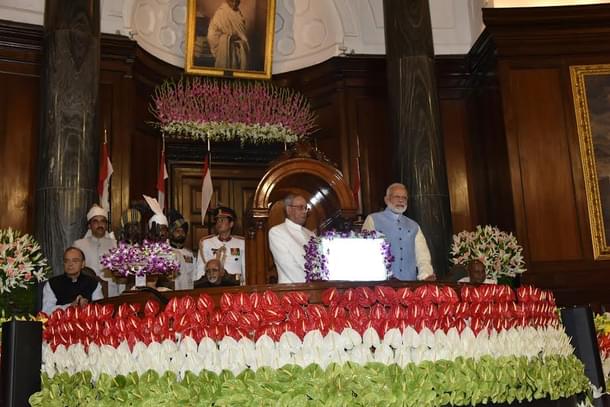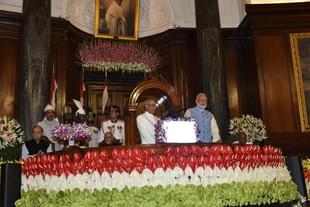Economy
GST Is Finally Here and How!
Swarajya Staff
Jul 01, 2017, 01:00 AM | Updated 01:00 AM IST
Save & read from anywhere!
Bookmark stories for easy access on any device or the Swarajya app.


At the stroke of the midnight hour today (1 July), the historic Goods and Services Tax (GST) came into effect with President Pranab Mukherjee leading the country into it at a ceremony inside the central hall of the Parliament.
The President heralded what is arguably the largest tax reform in the history of independent India. In attendance was the Prime Minister Narendra Modi, Finance Minister Arun Jaitley, Cabinet ministers, Reserve Bank of India’s governor, Urjit Patel, and other dignitaries. The Parliament hall seemed filled to the brim though a certain section of the Opposition refrained from being a part of the event.
Aimed at creating a unified market for the entire nation, GST replaces over a dozen central and state taxes and value added tax. Currently, 1211 items (except for gold and rough diamonds) have been classified under the following tax slabs for the GST: 0 per cent, 5 per cent, 12 per cent, 18 per cent, and 28 per cent. Out of these, most items finds themselves attracting 18 per cent tax.
Prime Minister Narendra Modi in his address said that while in legal terms, GST may be defined as Goods And Service Tax, in reality it is ‘Good and Simple Tax’. Earlier in his speech, the Prime Minister had stated that just like Sardar Vallabhbhai Patel unified India politically, GST would unify India economically.





